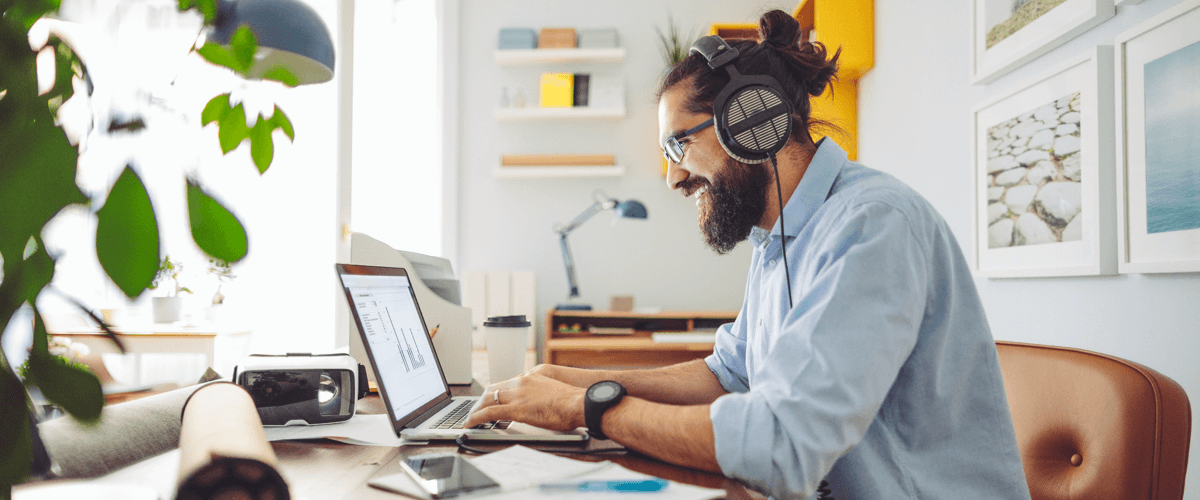Are you planning the next steps for your business under COVID-19 Alert Levels? We are too. While the Alert Level 4 lockdown came quickly, we now have some time to plan ahead for the journey back to life as normal.
At OfficeMax, our Leadership Team has been working hard to ensure we have a solid plan in place for all four Alert Levels. This has meant changing a lot about the way we work, manage our people and protect our customers.
In this guide you can discover the four key factors we considered as part of our plan, as well as a free template to help you start planning your own response for each Alert Level. We hope this can help you get your business back up and running as fast as possible.
Plan your next steps
If you haven't already, draft a plan for your business for the next 3 months. Keep it simple, but try to cover topics such as:
1. What were your business goals prior to COVID-19? How might these change now?
2. What does each Alert Level mean for your staff and operations?
3. What does each Alert Level mean for how you serve your customers?
4. How has demand changed for your products and services? How might this change at each Alert Level?
5. Who is your target customer segment? Has this changed at all? Do they have new needs you can assist with? What impacts will COVID-19 have on your customer segments at each Alert Level?
6. What challenges will your business need to overcome (i.e. less staff, high demand for products, keeping staff safe, etc.)?
7. What opportunities can you maximise?
8. How should your marketing efforts change? Is your audience consuming advertising differently now? Can you replace 'hard-sell' tactics with value-add content marketing?
To help, we've created a template for businesses to start planning what each Alert Level looks like for them. This template helps break down what the plan is for each part of your business (i.e. Retail vs Marketing). At worksafe.govt.nz you can also find a helpful and detailed COVID-19 safety plan for Level 3.
Make sure you also keep an eye on business.govt.nz for the latest updates and business advice from the Government.
Update your Organisational Policies
Each level requires some or all of your teams to work from home where possible. Within Alert Level 3, 2 and 1 there may be a mix of people working from both home and the workplace too. All of this may require you to make adjustments to your organisational policies.
You will need to consider addressing flexible work hours, flexibility around workspaces, health and safety, and security.
1. Human Resources
No doubt, most HR teams around the country have been working hard to update their policies. Here are some things to think about if you're managing HR yourself or you need a place to get started.
a) Conflict Resolution Management: How is this done when your team are working from home?
b) Updating Confidentiality, Security and Privacy Policies to reflect a mix of working from home and from the office (i.e. are confidential files allowed to be taken home?)
c) Do there need to be changes to how you manage and review staff performance?
d) Mobile Data Usage: Do your staff need access to more data due to their new work style?
2. Health and Safety
It's very likely that your Health and Safety Policies need to be changed to reflect the measures we need to take to help stop the spread of COVID-19.
Make sure you cover what is required by checking the WorkSafe website. Some things to consider are:
a) Social Distancing: Are your staff able to be 1 metre apart from each other and visitors (Courier Drivers etc.) at all times? Are they aware for home visits that they must keep a 2 metre distance from all people in the house? (This especially applies to tradespeople.)
b) Do you need a dedicated area marked out for Courier Drivers to pick up orders? What about deliveries?
c) Have your team got acess to hand washing facilities and hand sanitiser?
d) Have you got a system and policy in place to ensure surfaces are cleaned thoroughly between shifts?

Make sure your team has the technology and furniture they need
Since the lockdown, many of our customers have stocked up on monitors, headsets, webcams, chairs, keyboards, mice and more to help their staff work from home. It has been incredible to see how fast everyone moved and managed to adjust! Thankfully, we now have some time to plan for the next steps.
Over the next period, it may be that your team work from home and work in shifts (or "work bubbles") to allow for easy contact tracing. Or perhaps you'll have a split of people permanently at work and permanently at home for the next few months. Either way, their needs may change.
Connection and Security:
Is your team set up at home with WiFi and enough mobile data (especially for calls)? Establishing a secure connection for your team is vital. How many of us have wasted entire days because of terrible internet connections? The productivity of your team relies on good internet.
If you're dealing with confidential data (such as customer data) it is also a good idea to establish a private network through something like a VPN. This will allow your team to log into a secure network and share data within it.
Communication:
Mobile phones/Softphones — Does everyone on your team have access to a phone or a softphone service like VoIP? Does everyone have easy access to their colleagues, suppliers and customer's contact details?
Messaging services — As we covered in our Guide to setting your staff up to work from home, there are many messaging services and tools you can use (and probably already are). Now that you've had a chance to experience one or two, is it time to formally adopt one? Is Zoom your new meeting room? Will Slack become your entire internal communication channel? Think about formalising something that your team is already used to using.
Headsets — Becoming a "digital-first" team requires a lot of phone and video time. Many of us have made do for the last few weeks, now is the chance to ensure your team have the equipment they need to work safely and efficiently (no more taped together headsets or earbud headphones that hurt the ears with long use!).
Furniture:
In the rush to get set up at home, many Kiwis have fallen back on the classic "No. 8 Wire" approach to rig up their home workstations. From using ironing boards as standing desks, to precariously balancing laptops on stacks of books, these measures have helped us all get the job done. However now that we're looking into longer term "Working from home" situations, it could be a good time to make sure they have the set up they need to work productively.
Do they need an office chair to ensure their set up is as ergonomic as possible? Even something as small as providing a laptop stand, keyboard and mouse could make a world of difference. In the long term, you're ensuring your team stays safe and keeps healthy. Check out our Working From Home page for more ideas and products.
Documentation:
Many businesses still operate with a mix of paper and digital files. If many of your invoices are paper-based, but they can't be filed at work, does your team have the equipment and Network space to space and file these digitally?
Devices:
Is your team set up with mobiles, laptops and other devices? Are they able to use their own devices to work? What does that involve (i.e. VPN)?

Set your workplace up for social distancing
Do you need to rearrange your workplace to accommodate social distancing practices? Consider changing to a flexible work environment if you haven't already. At OfficeMax, our main goal is to help our team concentrate, collaborate, communicated and be creative. Here are some things to consider:
Hot desks:
Bringing in a hot desk system allows your team to easily work together but keep a 1 metre distance. This is especially useful if your system involves creating "work bubbles" that come to work certain days of the week, alternating with other work bubbles.
Of course, in this system it is vital that you include good cleaning and hygiene practices.
Cleaning and Hygiene:
Consider equipping your desks or work areas with disinfectant wipes, sprays or other cleaning equipment.
Do you need to increase the requirements of your regular cleaners to keep your workplace safe for your staff and customers? Will your workplace require a 'deep clean' before your staff return?
Personal lockers/storage:
Becoming more "nomadic" with work means no longer being able to store things at your desk. If your team are floating between the home and office, providing them with personal storage or lockers can help make their life a lot easier.
Hotboxes or archive storage boxes can help your staff keep all their bits and pieces together to move between work and home.
Socialising:
Getting back to work after several weeks of isolation means that most of us will be itching to socialise with our team. Help your staff stay safe by providing areas where groups can gather to relax and chat, without breaking their social distancing rules.
Pay special attention to areas such as kitchenettes, staffrooms or lunch rooms, where the natural temptation is to sit together. It's easy to forget the 1 metre rule when you're deep in discussion about the latest podcast you listened to!
Visual cues such as signs and tape will help your team keep their distance. You might also consider removing chairs and scheduling rostered breaks.
Adjust your leadership style
Finally, the last thing to consider is how your leaders operate. For businesses that have not had remote workers before, the change in leadership style can be a steep adjustment. You're no longer measuring "time spent working". There's no way you can really know whether your team has spent 8 productive hours of work a day at home. (Though chances are they have actually worked for longer than usual!)
Instead, consider focusing on measuring the results of your team's work. To do this, your leaders will need to do a few things:
1. Set up clear expectations and goals around timeframes for tasks
Make sure your team knows what they are doing, and when it needs to be done by.
2. Make sure teams have what they need in order to complete these tasks
Does your team have everything they need to get the tasks done? Specialist equipment, software or access to files are things to consider.
3. Have a clear expectation on how you will measure success
Will it be 'task completed in this timeframe'? Whatever it is, makes sure there is clear communication and expectation for what is "job done".
Every business will have different needs and approaches to how they keep their staff safe in the coming weeks. Whatever you choose to do, OfficeMax is here to help you protect your staff and get back to work.
*This information is intended as a guide only to general safety and does not replace or represent expert advice. OfficeMax New Zealand does not accept responsibility or liability for any action taken as a result of the information provided.
|